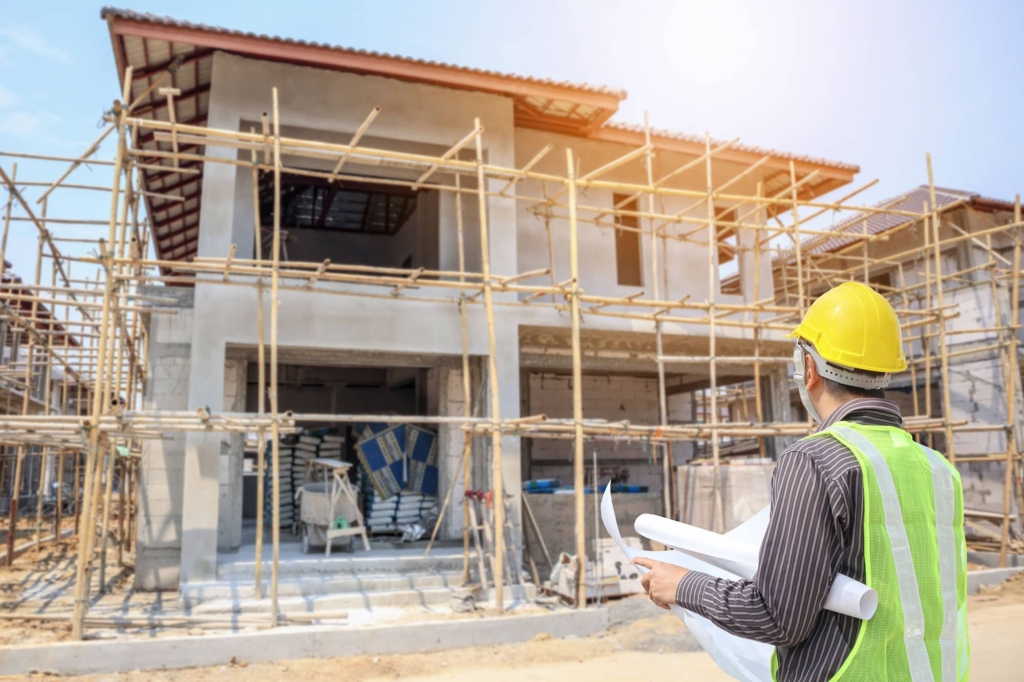How do global tariffs, U.S.-China tensions, and disrupted trade routes impact the price of lumber and housing affordability in Vancouver? A look at the hidden costs of geopolitical conflict on local real estate.
When people think about housing prices in Greater Vancouver, their minds go straight to demand: foreign buyers, interest rates, immigration, or investor speculation. Rarely do we pause to consider the other side of the equation—the cost of actually building the homes themselves. And yet, the silent force reshaping housing affordability in our region may not be who’s buying homes, but what it costs to build them. Increasingly, that cost is being driven up by international trade policy, rising tariffs, and fractured global supply chains.
Consider the humble 2×4. It’s one of the most basic inputs in construction, yet its price volatility over the past five years has rivalled Bitcoin. During the pandemic, lumber prices hit historic highs, in some cases tripling from previous averages. While prices have since come down, they remain unstable—and much of that instability is rooted in geopolitics, not local demand.
We’re now entering a new era of global trade friction. Tensions between the U.S. and China are intensifying, with tariffs and retaliatory trade measures becoming more commonplace. Canada, though not always the direct target, often finds itself caught in the crossfire. This matters more than it might seem. A surprising amount of building materials, fixtures, and finishes—everything from steel and glass to cabinets and copper wiring—depend on open trade flows and efficient, low-cost imports. When those are disrupted, the entire development pipeline starts to feel the pressure.
On top of this, the renegotiation of North American trade relationships post-NAFTA, coupled with U.S. protectionist policies under both Trump and Biden, have raised costs on Canadian exports like softwood lumber. The ongoing Canada-U.S. softwood lumber dispute, decades in the making, continues to inflate costs for domestic builders and erode profit margins on both sides of the border. In B.C., where the forestry industry remains a pillar of the economy, these tariffs don’t just affect exporters—they ultimately drive up domestic lumber prices as well.
For Vancouver developers, these issues are more than academic. Higher material costs create tighter pro formas, delay project timelines, and in some cases, kill projects entirely. Marginal or mid-density infill projects—already on the razor’s edge of feasibility due to high land costs and zoning hurdles—are the first to be affected. The knock-on effect is clear: fewer housing starts, slower construction, and a longer runway to address the region’s chronic supply shortage.
What makes this issue particularly complex is that it’s largely invisible to the average buyer. Unlike interest rates, which change monthly and dominate the headlines, tariff impacts are felt gradually, like inflation through the back door. A townhouse that once cost $750,000 to build now costs $800,000—but buyers rarely know why. The narrative gets reduced to “greedy developers” or “housing bubbles,” when in fact, global forces are quietly reshaping the economics of supply.
And this doesn’t only impact large-scale condo towers. Smaller-scale builders—those constructing laneway homes, custom builds, duplexes, and triplexes—are hit even harder. Without the bulk purchasing power of institutional developers, they absorb the full force of these cost hikes, which are then passed directly onto end users. It’s no coincidence that custom home construction costs in Metro Vancouver are now exceeding $350 to $400 per square foot, even for modest designs.

This is also where policy and reality begin to clash. Governments at every level are pushing for increased housing supply, faster building timelines, and more affordability—but those efforts are being quietly undercut by an international trade environment that’s working in the opposite direction. Incentives like density bonuses, tax breaks, or streamlined permitting can only go so far when materials cost 20% more than they did two years ago.
Looking forward, things may get worse before they get better. As global political instability ramps up—be it from China-U.S. decoupling, escalating tensions in the Middle East, or renewed protectionism in a potential Trump 2.0 administration—supply chain volatility could intensify. Add in the pressure of inflation, interest rate fluctuations, and rising insurance premiums, and it’s clear the real estate sector is navigating a much more complex environment than even five years ago.
For local buyers, this means recalibrating expectations around price and timelines. The dream of “more affordable housing through increased supply” will remain elusive if the cost of that supply keeps rising. For investors and developers, it means building more contingencies into budgets, tracking international trade developments, and considering long-term partnerships that can insulate against material cost shocks. And for policymakers, it’s a wake-up call: no amount of zoning reform will solve affordability if materials remain subject to the whims of global politics.
In short, Vancouver’s real estate market doesn’t operate in a vacuum. Every nail, every sheet of plywood, every shipment of tile is part of a much larger global dance. When that dance is disrupted by tariffs and trade wars, the rhythm of our housing market falters. And until we start connecting those dots, we risk misdiagnosing the very problems we’re trying to solve.
